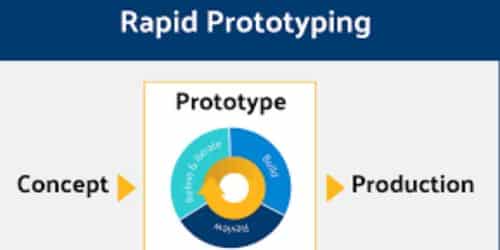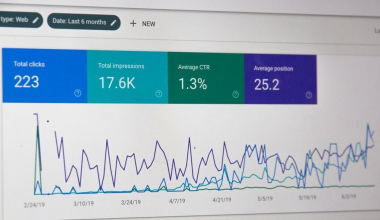In recent times, product development will not be complete without prototyping and prototyping is a difficult process if done with the traditional method. It is mostly not efficient and this necessitates the need for something better. Rapid prototyping RP is a process used in product development to quickly create physical or digital prototypes of a product design. The purpose of RP is to allow designers, engineers, and stakeholders to quickly test and refine product concepts before investing significant time and resources into manufacturing a final product. In fact, the entire process is effective in product development as well as in bringing a product to life. Let’s get on to what rapid prototyping is, its method, design, benefits, and services in 3D printing.
Understanding Rapid Prototyping
The process of rapid prototyping involves creating a prototype that can be tested and refined based on feedback from users, designers, and engineers. Prototypes can be physical, such as a 3D printed model, or digital, such as a computer-generated model. Rapid prototyping allows designers and engineers to test and refine product designs quickly, leading to faster time to market and reduced development costs.
There are several methods used in rapid prototyping, including 3D printing, CNC machining, and virtual prototyping. Each method has its own advantages and disadvantages, and the appropriate method depends on the specific requirements of the product and the desired outcome.
Generally, RP is a valuable tool for product development that can help reduce costs, improve communication, and accelerate time to market. By creating effective prototypes, designers, and engineers can gain valuable insights into product design and functionality, leading to better end-products that meet user needs and expectations.
How Does Rapid Prototyping Work?
Rapid prototyping works by using various methods to create physical or digital prototypes of product designs quickly and efficiently. Rapid prototyping is a valuable tool for product development that allows for quick and efficient testing and refinement of product concepts, resulting in faster time to market, reduced costs, and improved end-products.
The process typically involves the following steps:
#1. Design the Product
The product design is created using computer-aided design (CAD) software or another design tool.
#2. Create the Prototype
A physical or digital prototype is created using various methods, including 3D printing, CNC machining, or virtual prototyping. The method used depends on the complexity of the design, the materials required, as well as the desired outcome.
#3. Test the Prototype
The prototype is tested to identify any design flaws or areas for improvement. Feedback from stakeholders and end-users is used to refine the design as well as make any necessary changes.
#4. Iterate
Changes are made to the prototype based on the feedback received, and the process is repeated until the desired outcome is achieved.
What are the Methods and Benefits of Rapid Prototyping
A rapid prototype would not function effectively and efficiently without a process, these processes are called methods. Rapid prototyping is a valuable tool for product development that can help reduce costs, improve communication, and accelerate time to market. By using appropriate methods and taking advantage of the benefits, designers, and engineers can create effective prototypes that provide valuable insights into product design and functionality.
The following are some of the methods and benefits of rapid prototyping:
Methods:
#1. 3D Printing
Using a 3D printer to create a physical prototype of a product design.
#2. CNC Machining
Using a computer-controlled machine to create a physical prototype from a block of material.
#3. Virtual Prototyping
Using computer-aided design (CAD) software to create a digital prototype of a product.
Benefits:
The following are some of the benefits of RP to businesses:
#1. Faster Time to Market
Rapid prototyping allows for faster testing and refinement of product concepts, which can also accelerate the product development process.
#2. Reduced Costs
Identifying and addressing design flaws earlier in the process can save significant costs associated with manufacturing and fixing errors later.
#3. Improved Communication
Prototypes provide a tangible representation of a product design, which can help stakeholders better understand and communicate design concepts.
#4. Better User Feedback
RP allows for testing and feedback from end users earlier in the product development process, which can lead to more user-centric product designs.
What Is Rapid Prototyping in 3D Printing
Rapid prototyping in 3D printing is a process that allows for the creation of physical prototypes of a product design using a 3D printer. The purpose of rapid prototyping is to quickly test and refine product concepts before investing significant time and resources into manufacturing a final product.
In 3D printing, the process of rapid prototyping involves creating a 3D digital model of the product design using computer-aided design (CAD) software. This digital model is then sent to a 3D printer, which creates a physical prototype layer by layer, using various materials such as plastic, metal, or composite materials.
One of the primary benefits of rapid prototyping in 3D printing is speed. 3D printers can quickly produce prototypes in a matter of hours or days, depending on the complexity of the design. This allows designers and engineers to quickly test and refine product concepts, resulting in faster time to market and reduced development costs.
Another benefit of rapid prototyping in 3D printing is customization. 3D printers can create highly customized prototypes that accurately represent the final product, including complex geometries and intricate details.
Generally, rapid prototyping in 3D printing is a valuable tool for product development that can help reduce costs, improve communication, and accelerate time to market. By creating effective prototypes using 3D printing technology, designers and engineers can gain valuable insights into product design and functionality, leading to better end-products that meet user needs and expectations.
Rapid Prototyping Services
Rapid prototyping services are companies that provide prototyping services for product development using various methods, including 3D printing, CNC machining, and virtual prototyping. These services help designers and engineers create physical or digital prototypes of their product design quickly and efficiently.
Some of the common services offered by rapid prototyping companies include:
#1. 3D Printing
RP companies use 3D printing technology to create physical prototypes of product designs. This method allows for the creation of complex geometries and intricate details.
#2. CNC Machining
RP companies use computer-controlled machines to create physical prototypes from a block of material. This method is best suited for creating parts with high precision and accuracy.
#3. Virtual Prototyping
RP companies use computer-aided design (CAD) software to create digital prototypes of product designs. This method allows for testing and refinement of product concepts before creating a physical prototype.
List of Companies that Provide Rapid Prototyping Services
These companies offer a range of RP services, including 3D printing, CNC machining, injection molding, and sheet metal fabrication. They can produce prototypes quickly and accurately, using a variety of materials and processes. It’s important to do your research and select a company that meets your specific needs and requirements. Here are some companies that provide RP services:
- Protolabs
- Xometry
- Fictiv
- 3D Systems
- Stratasys Direct Manufacturing
- Fast Radius
- Sculpteo
- Materialise
- RapidMade
- Rapid Manufacturing
Rapid Prototyping Design
Rapid prototyping design is the process of designing and creating physical or digital prototypes quickly and efficiently. The goal of rapid prototyping design is to test and refine product concepts before investing significant time and resources into manufacturing a final product. Generally, rapid prototyping is an iterative process that allows for quick and efficient testing and refinement of product concepts. By following best practices and using appropriate tools and methods, designers and engineers can create effective prototypes that provide valuable insights into product design and functionality.
The following are some best practices for rapid prototyping design:
- Focus on the essentials: When designing a prototype, focus on the essential features and functionality of the product. This will help to create a prototype that is easy to test and refine.
- Use simple materials: Use simple and inexpensive materials to create physical prototypes. This will help to reduce costs and allow for quick iteration.
- Use CAD software: Use computer-aided design (CAD) software to create digital prototypes. This allows for quick and easy changes to the design.
- Test and iterate: Test the prototype and use the feedback to refine the design. Iterate quickly to refine the prototype.
- Involve stakeholders: Involve stakeholders in the design process to get feedback and buy-in early in the process.
- Be open to feedback: Be open to feedback and be willing to make changes to the design. This will help to create a better end product.
What Are the Different Types of Rapid Prototyping?
The following are some of the most common types of rapid prototyping include:
- 3D Printing
- CNC machining
- Vacuum Casting
- Sheet Metal Prototyping
- Injection Molding
- Virtual Prototyping
What Is Rapid Prototyping in UX?
Rapid prototyping in UX (user experience) refers to the process of creating quick and low-fidelity prototypes of digital products or interfaces to test and refine the user experience before investing significant time and resources in development. The goal of RP in UX is to identify usability issues, gather user feedback, and refine the design to improve the user experience.
Is Rapid Prototyping the Same as Agile?
No. Rapid prototyping and agile are related concepts, but they are not the same thing. While rapid prototyping and Agile share some similarities, they are different in their approach and focus. Rapid prototyping is focused on design and user feedback, while Agile is focused on project management and development. However, both methodologies are designed to improve the final product by gathering feedback and iterating to refine the design or development until it meets the desired level of functionality and user satisfaction.
RP is a design methodology that involves creating quick and low-fidelity prototypes of a product or interface to test and refine the design. The goal of rapid prototyping is to identify usability issues, gather user feedback, and refine the design to improve the user experience. The process is iterative and involves creating multiple prototypes to test and refine the design until it meets the desired level of functionality and user satisfaction.
Agile, on the other hand, is a project management methodology that emphasizes flexibility, collaboration, and incremental development. Agile involves breaking a project down into smaller, more manageable chunks or sprints and developing and testing those chunks in an iterative and incremental manner. The goal of Agile is to deliver a high-quality product that meets the customer’s needs and expectations in a timely and cost-effective manner.
What Are the Three Stages of Rapid Prototyping?
The three stages in RP are:
- Design
- Prototyping
- Testing
- Business Start-Up from Scratch for Beginners (+ How-to-Start Guide)\
- RAPID FINANCE: Solutions, Loan reviews & requirements
- NEW PRODUCT DEVELOPMENT: Everything You Need to Know
- AFFILIATE MORTGAGE: Meaning, Services and Guide






